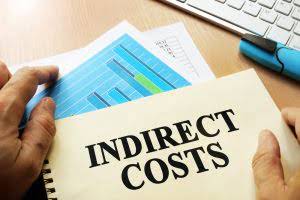Fixed Assets: Definition & Accounting Examples
Fixed and current assets are considered assets, but they have some key differences. These assets, like buildings, machinery, and equipment, provide value year after year, helping businesses grow and thrive. Managing them wisely can lead to efficiency and success (and tax deductions!). A strong asset turnover ratio is a great indicator fixed asset accounting examples of financial performance and is a useful way to attract new investors to your company. 5 years divided by the sum of the years’ digits of 15 calculates to 33.33% which will be used to calculate depreciation expense. Damages may be visible if one were to inspect the asset, but an impairment related to market changes may not be visible.
Current assets are assets that the company plans to use up or sell within one year from the reporting date. This category includes cash, accounts receivable, and short-term investments. While the business does not own that asset, leased assets act as fixed assets.
Is a Laptop a Fixed Asset?
Fixed assets can include buildings, computer equipment, software, furniture, land, machinery, and vehicles. For example, if a company sells produce, the delivery trucks it owns and uses are fixed assets. If a business creates a company parking lot, the parking lot is a fixed asset. However, personal vehicles used to get to work are not considered fixed assets. Additionally, buying rock salt to melt ice in the parking lot would be considered an expense and not an asset at all.
Fixed https://hamidandcompany.com/17541-2/ assets include property, plant, and equipment (PP&E) and are recorded on the balance sheet with that classification. Depreciation is that part of a cost of the fixed asset that is recorded as an expense during a financial year. In other words, depreciation of fixed assets shows such part of its value utilized during the financial year. On the other hand, non-current assets (or fixed assets) are those that are expected to be used in producing goods or services for a period longer than one year.
Fixed Assets (IAS : Definition, Recognition, Measurement, Depreciation, and Disclosure
The most common method is the straight-line method, where the cost is divided by the number of years in its useful life. An asset refers to any item of value owned by a business, with total assets encompassing the entire range of assets. Fixed assets are held long-term and are typically tangible (i.e., they can be physically touched). Investments in bonds are classified as short-term investments and current assets if they are expected to earn a higher rate of return than cash and if they have less than one year to maturity.
The reinvestment ratio is calculated by dividing capital expenditures by depreciation. This ratio tells how much an organization is investing in fixed assets and if they are replacing depreciated assets. An organization with significant fixed assets or operations tied to fixed assets should expect a ratio greater than one. The cost of new fixed assets will likely increase due to normal inflation, while depreciation is calculated using historical costs. If the ratio is at or below one, an organization is probably not investing in fixed assets.
Terms Similar to Fixed Asset
An older average age may indicate the organization will require reinvestment in fixed assets in the near future. This financial ratio can be helpful internally when budgeting and forecasting. It could potentially be useful for readers of financial statements in predicting if an organization will need to make a large capital outlay in the near future. Real estate or procurement teams should notify accounting when fixed assets are purchased. Operations teams must notify accounting of any material changes to the asset such as damages or planned improvements. Fixed tangible assets are depreciated over their lifetimes to reflect their use and the depletion of their value.






